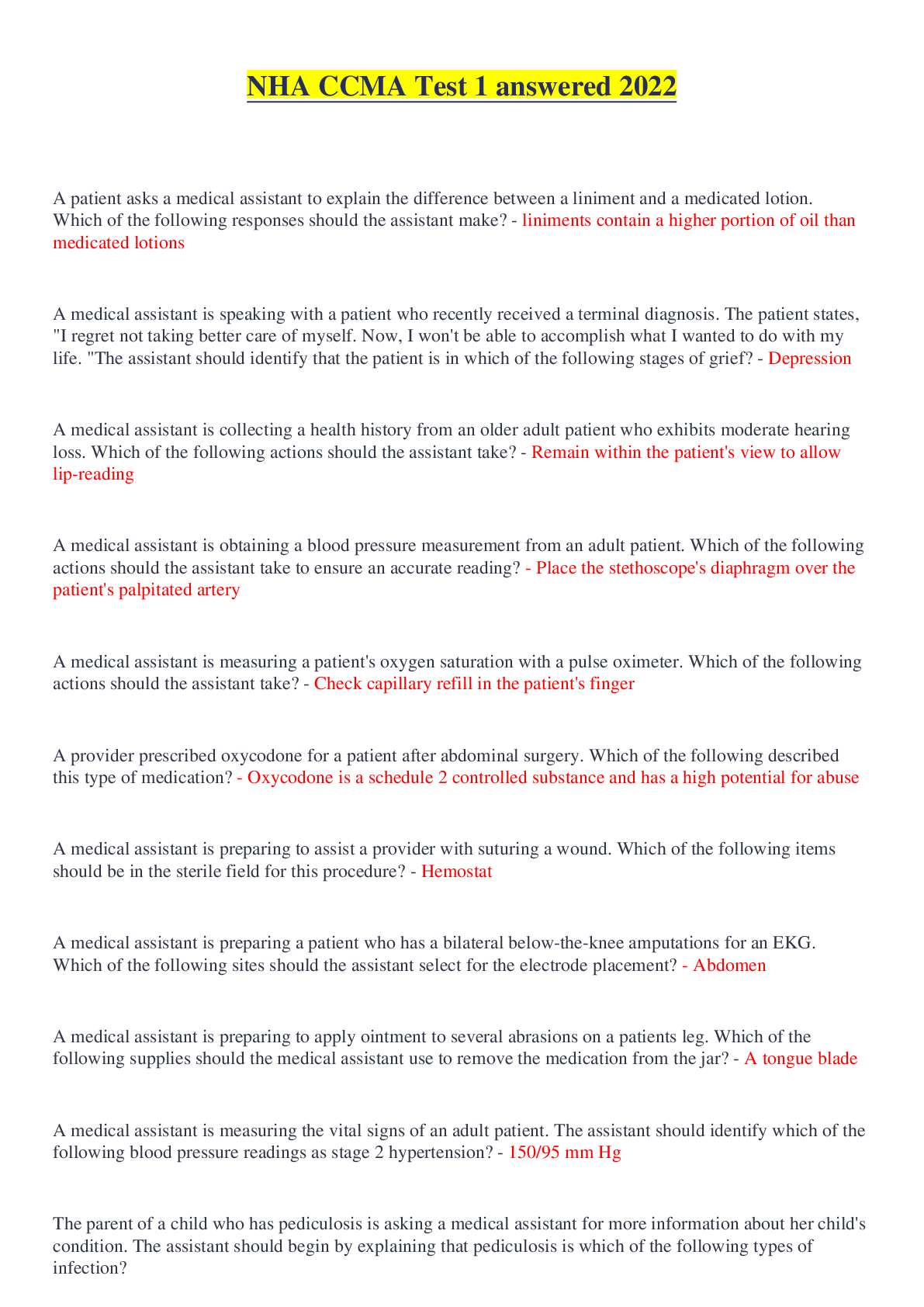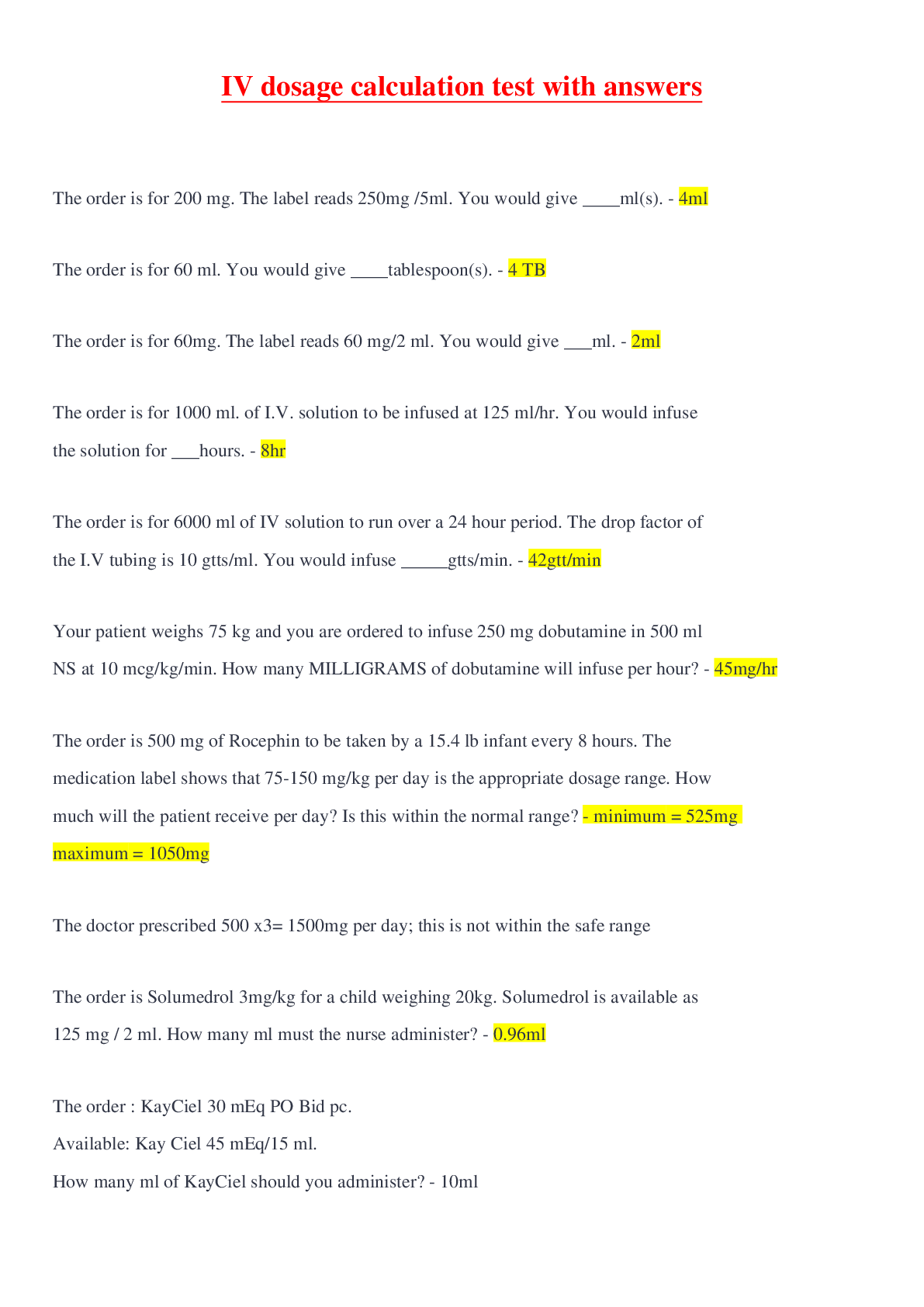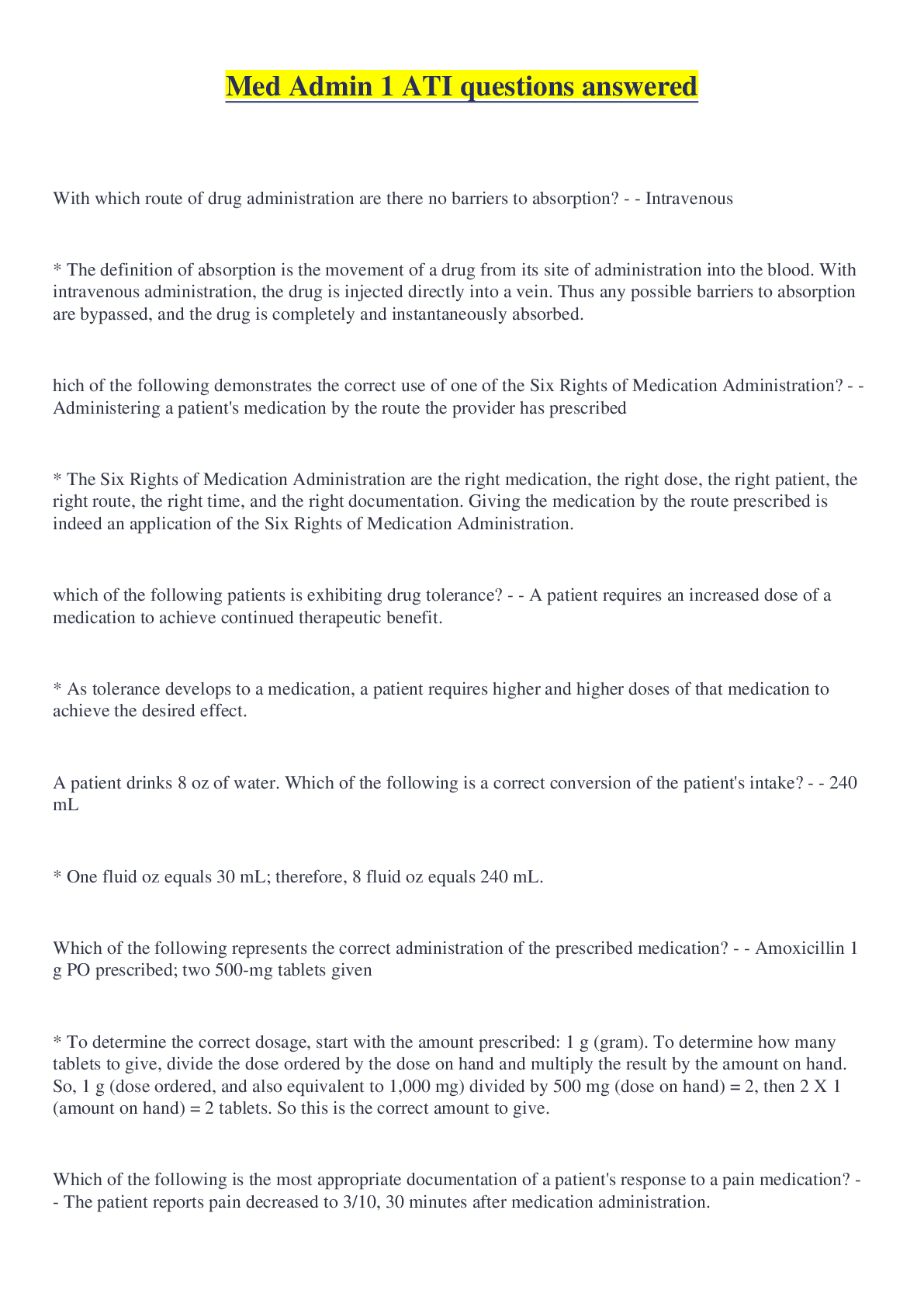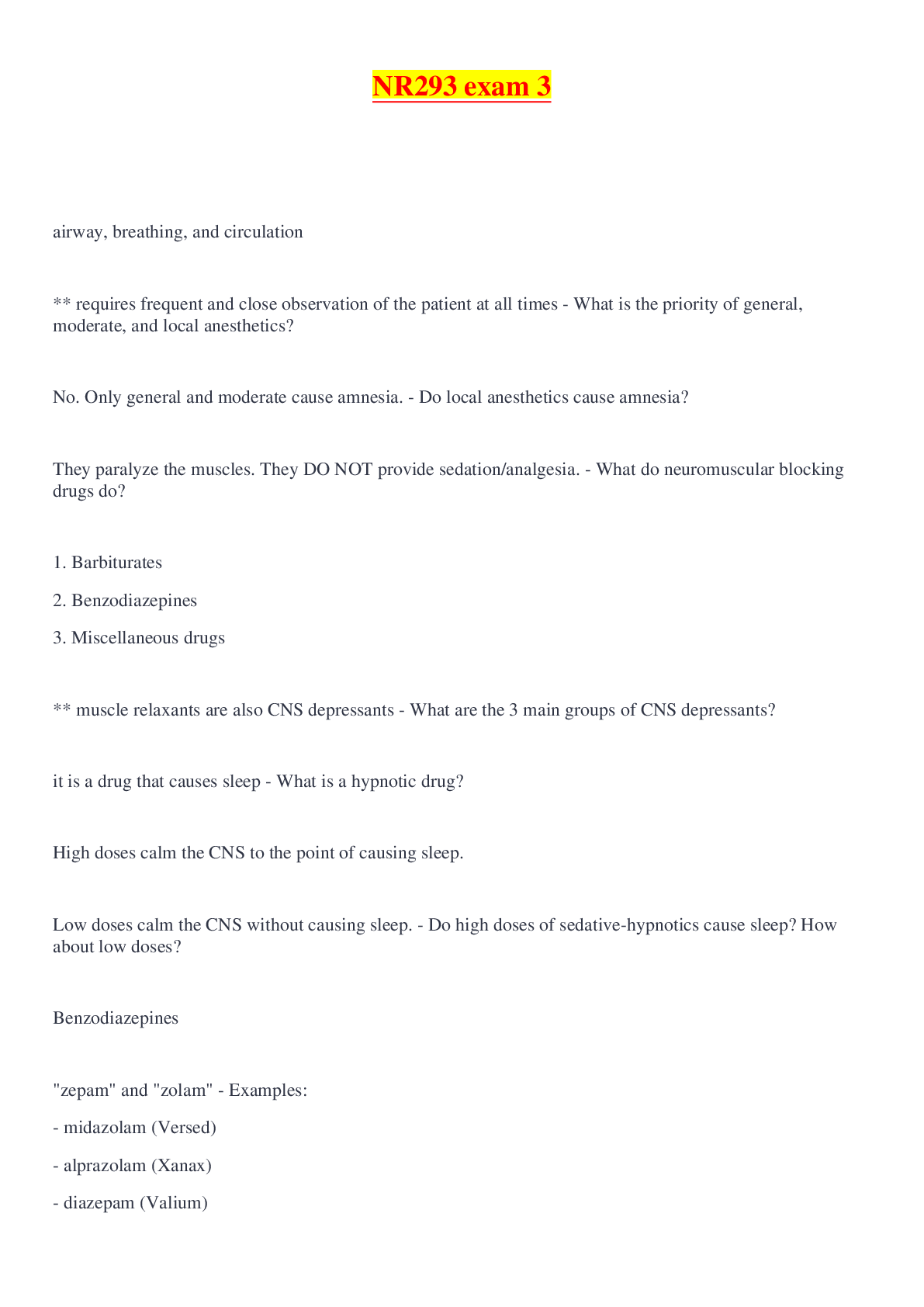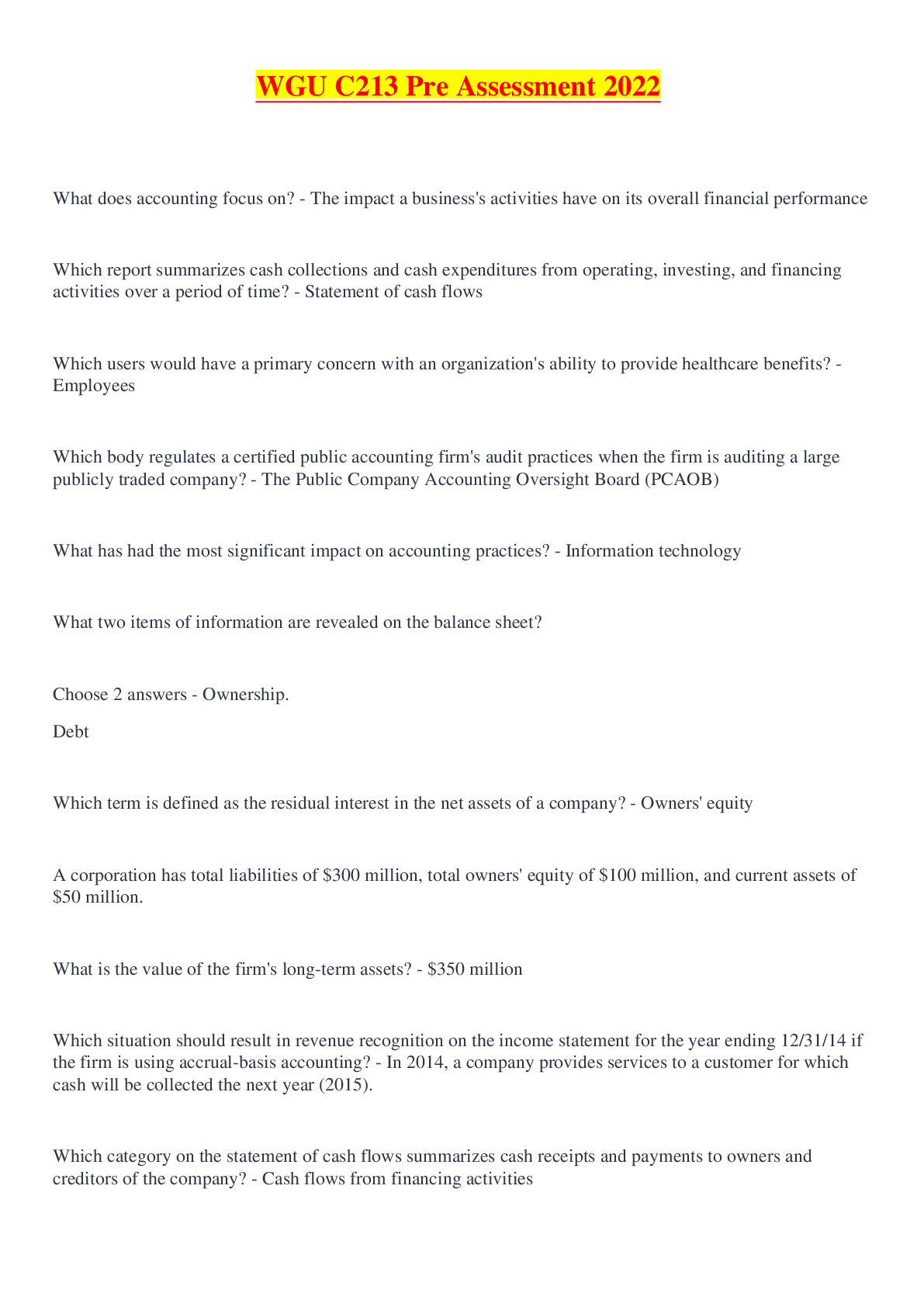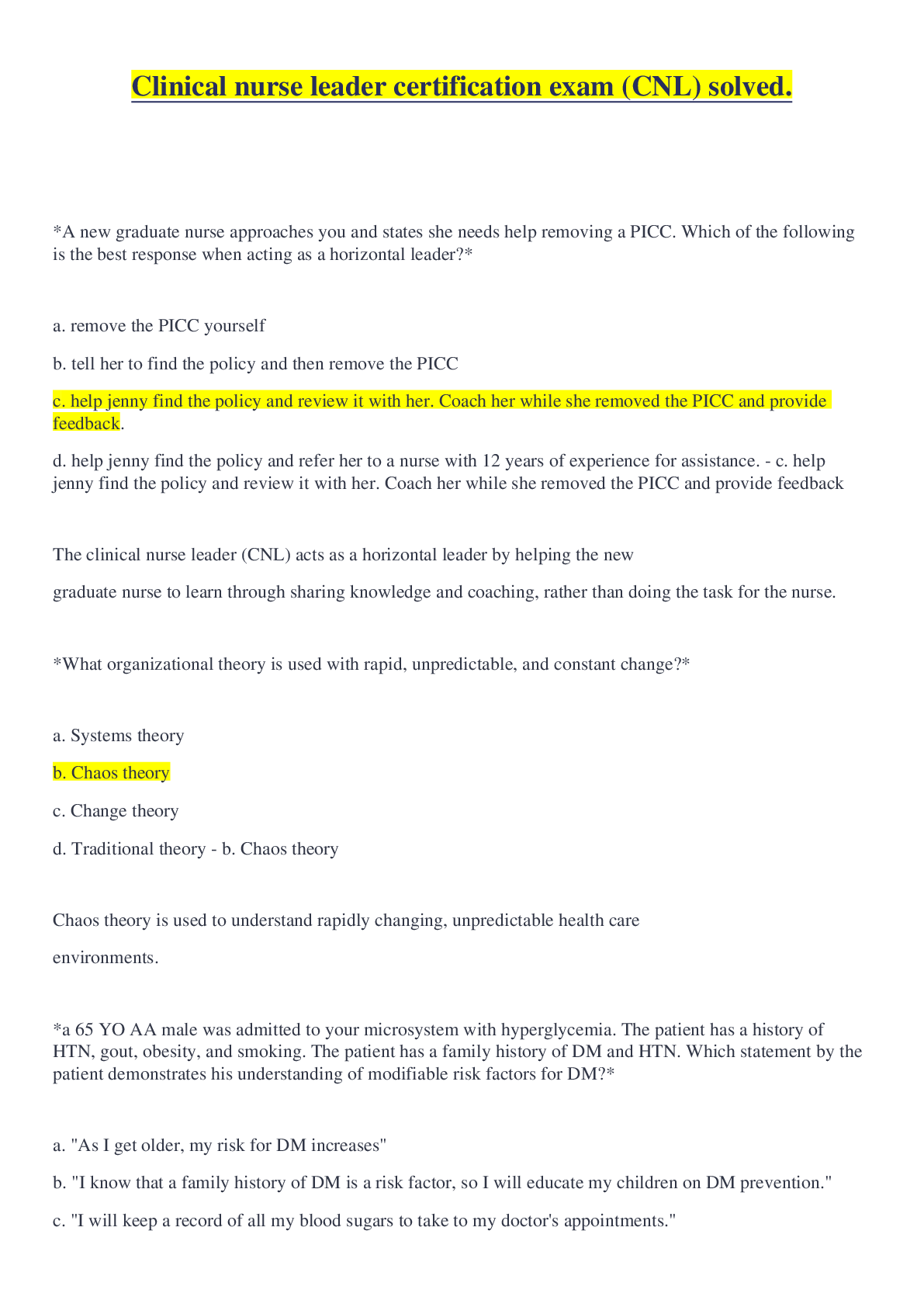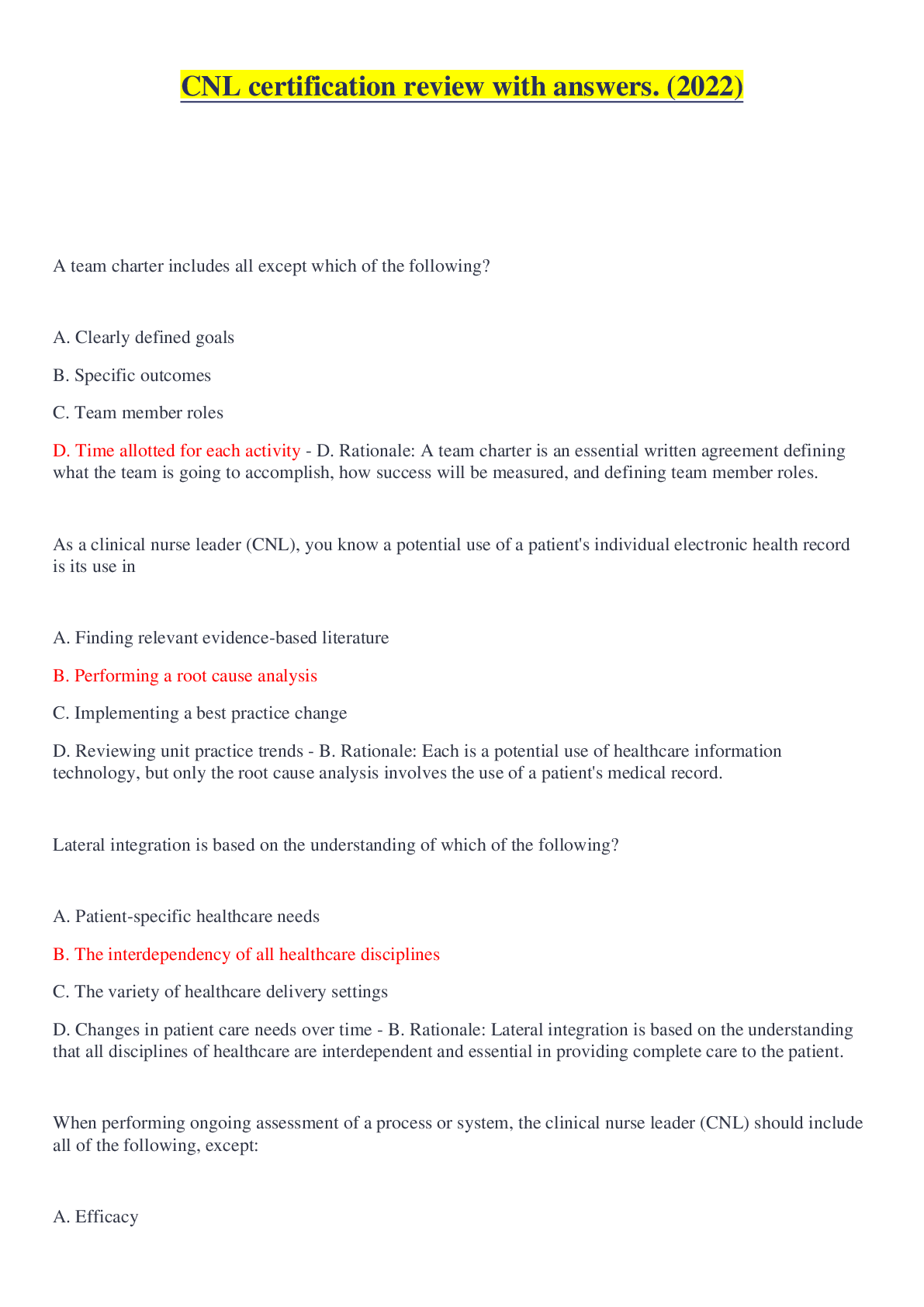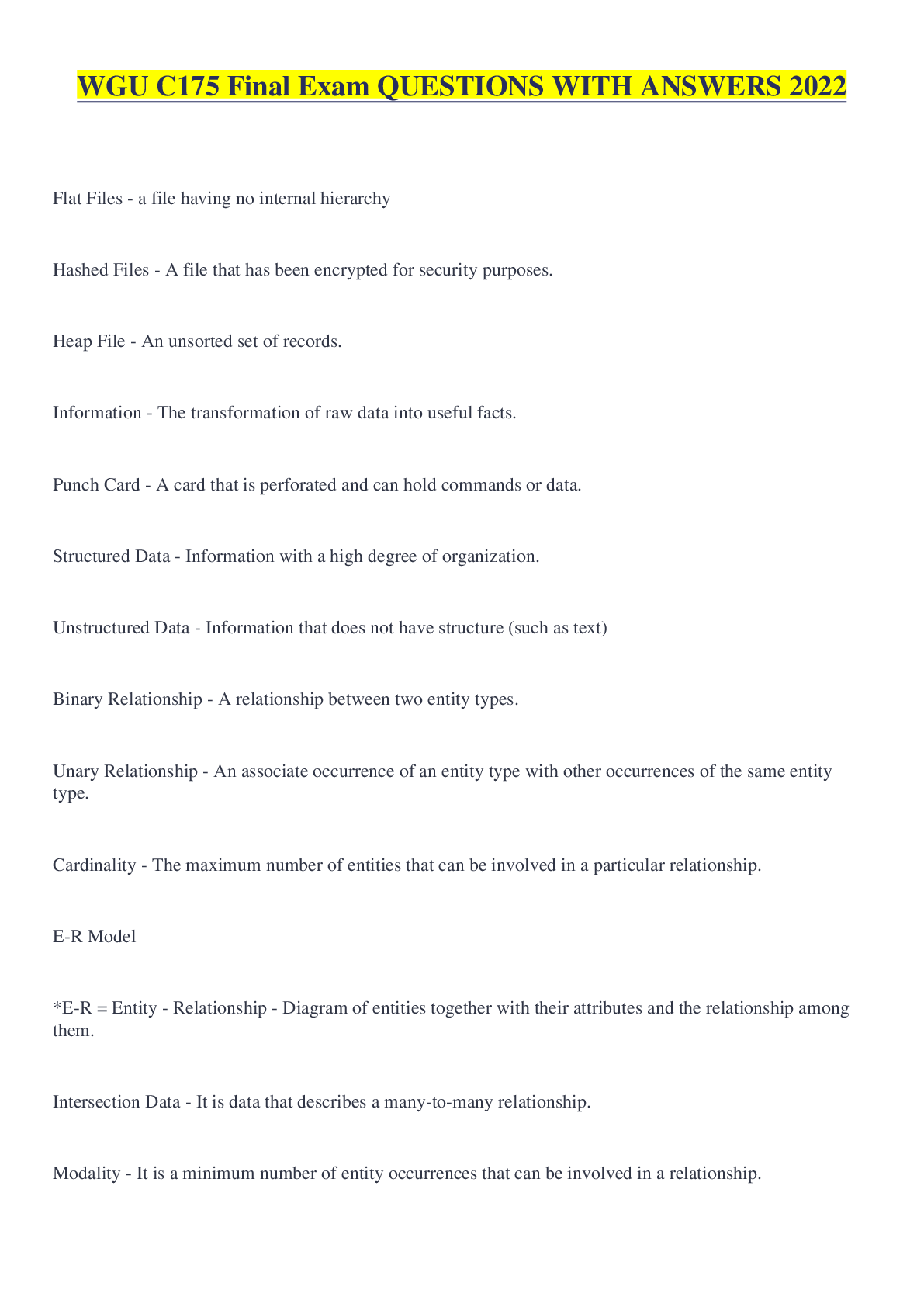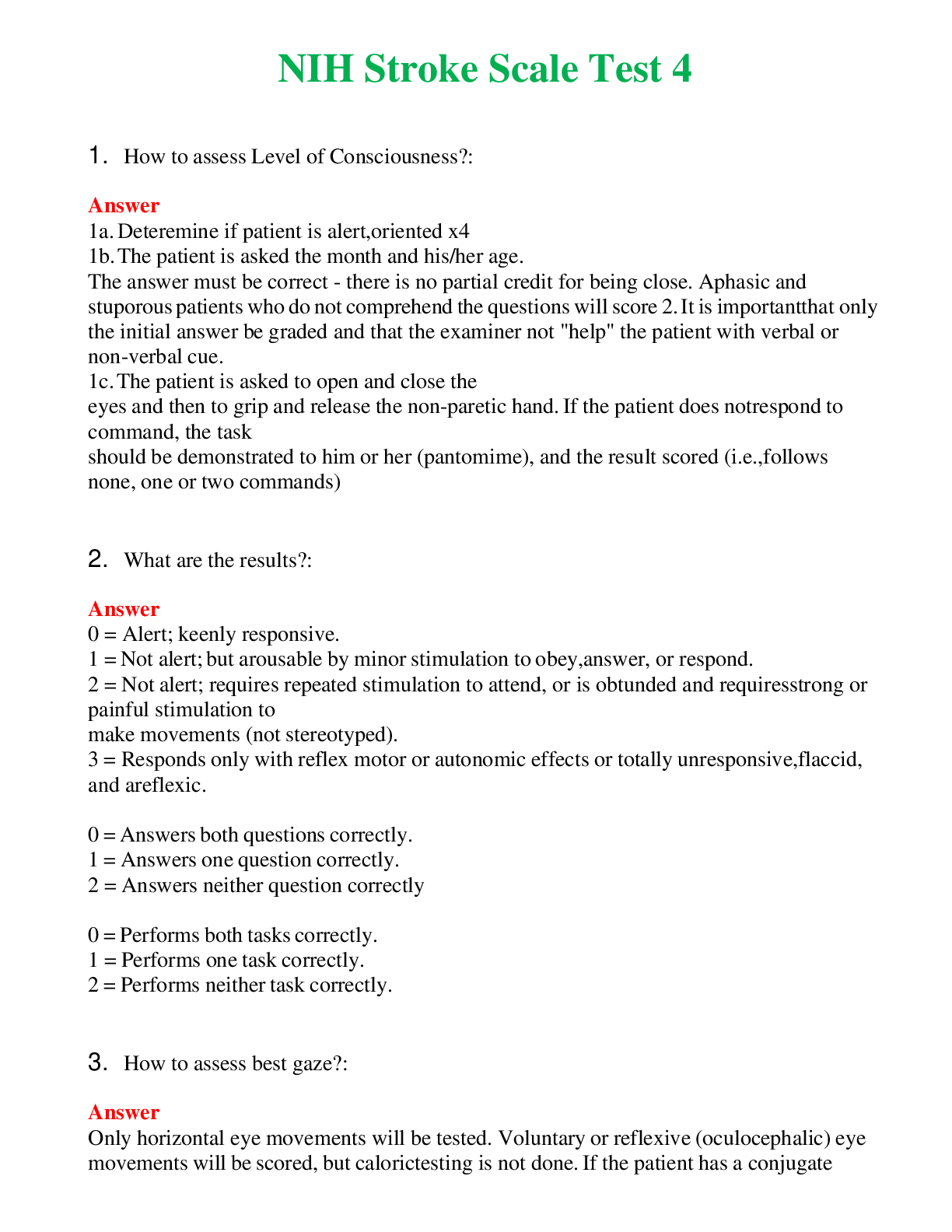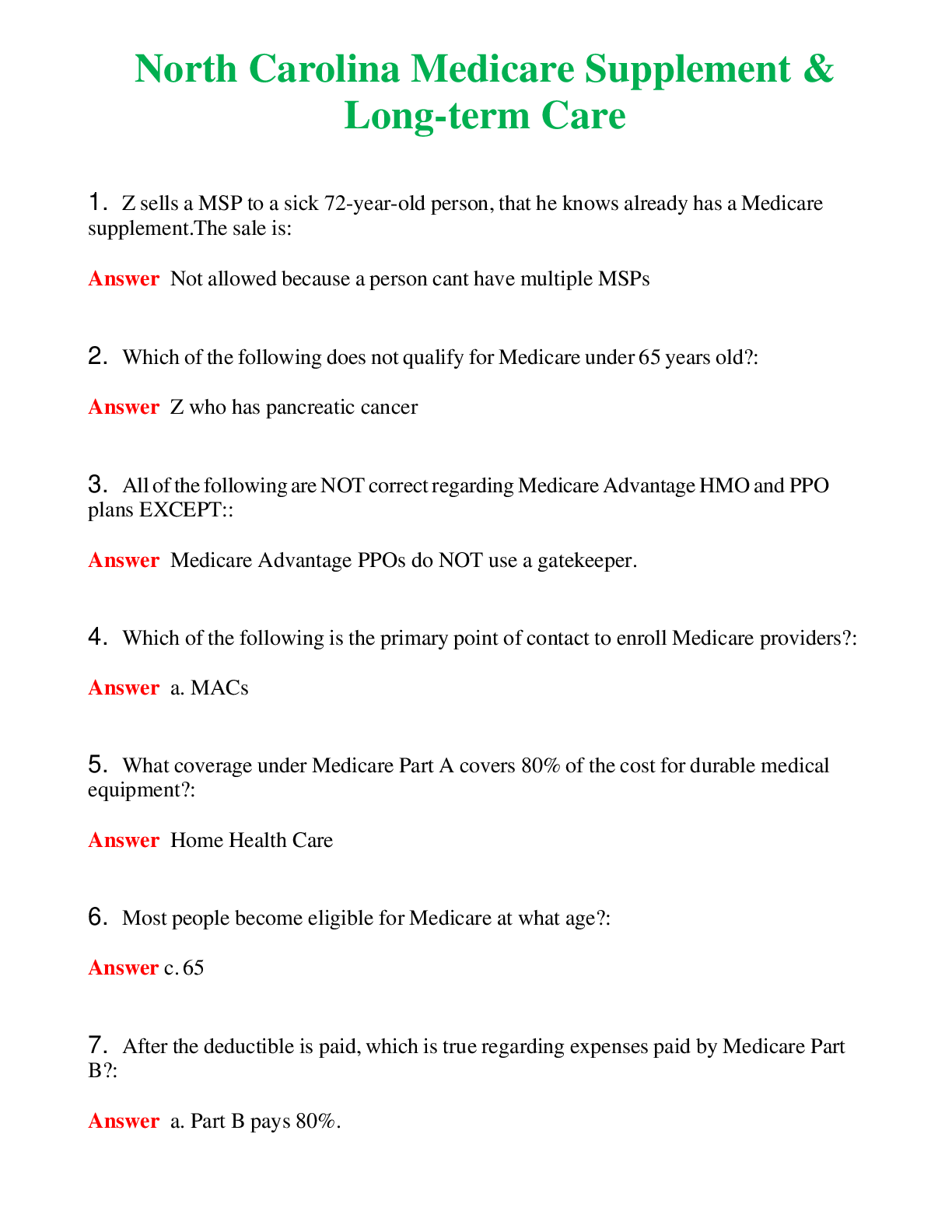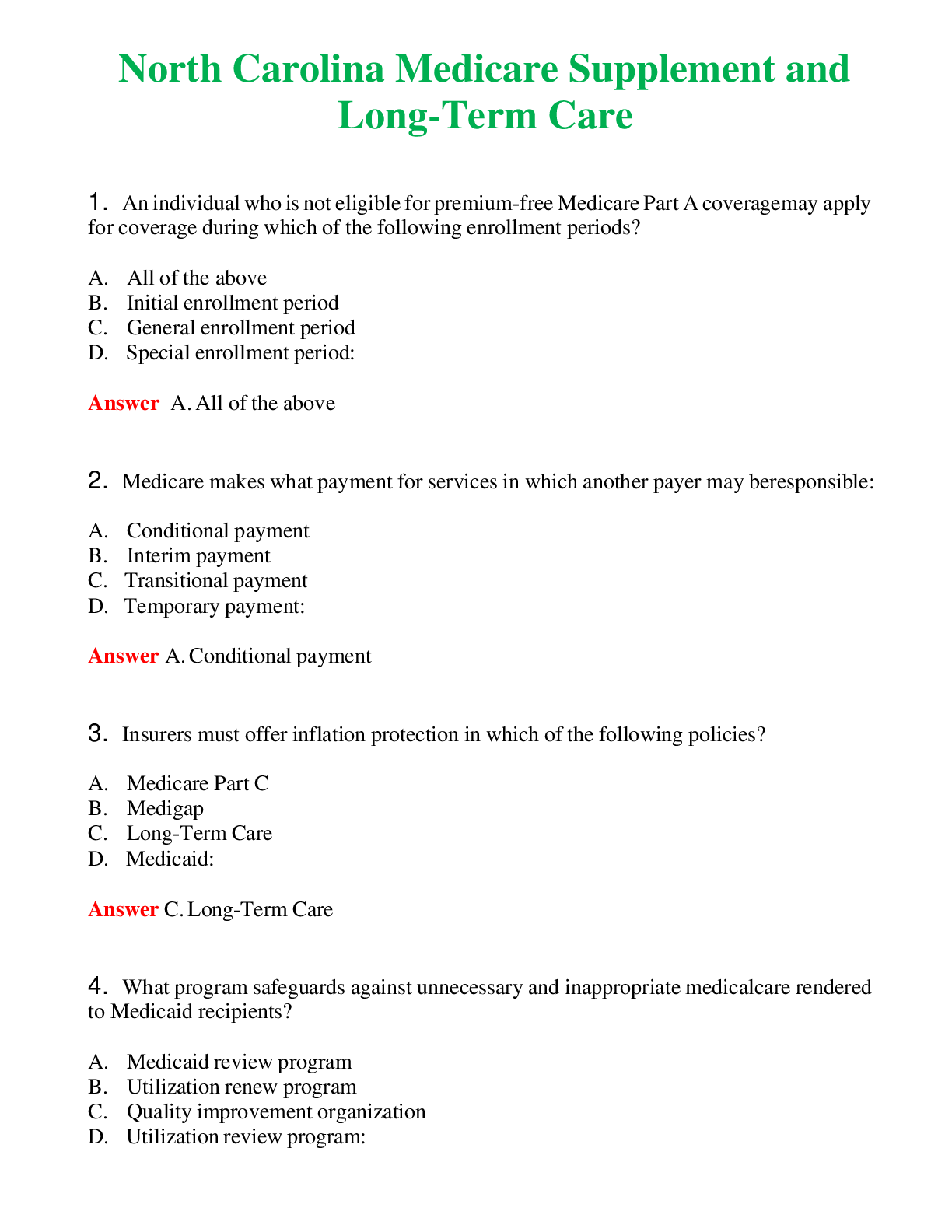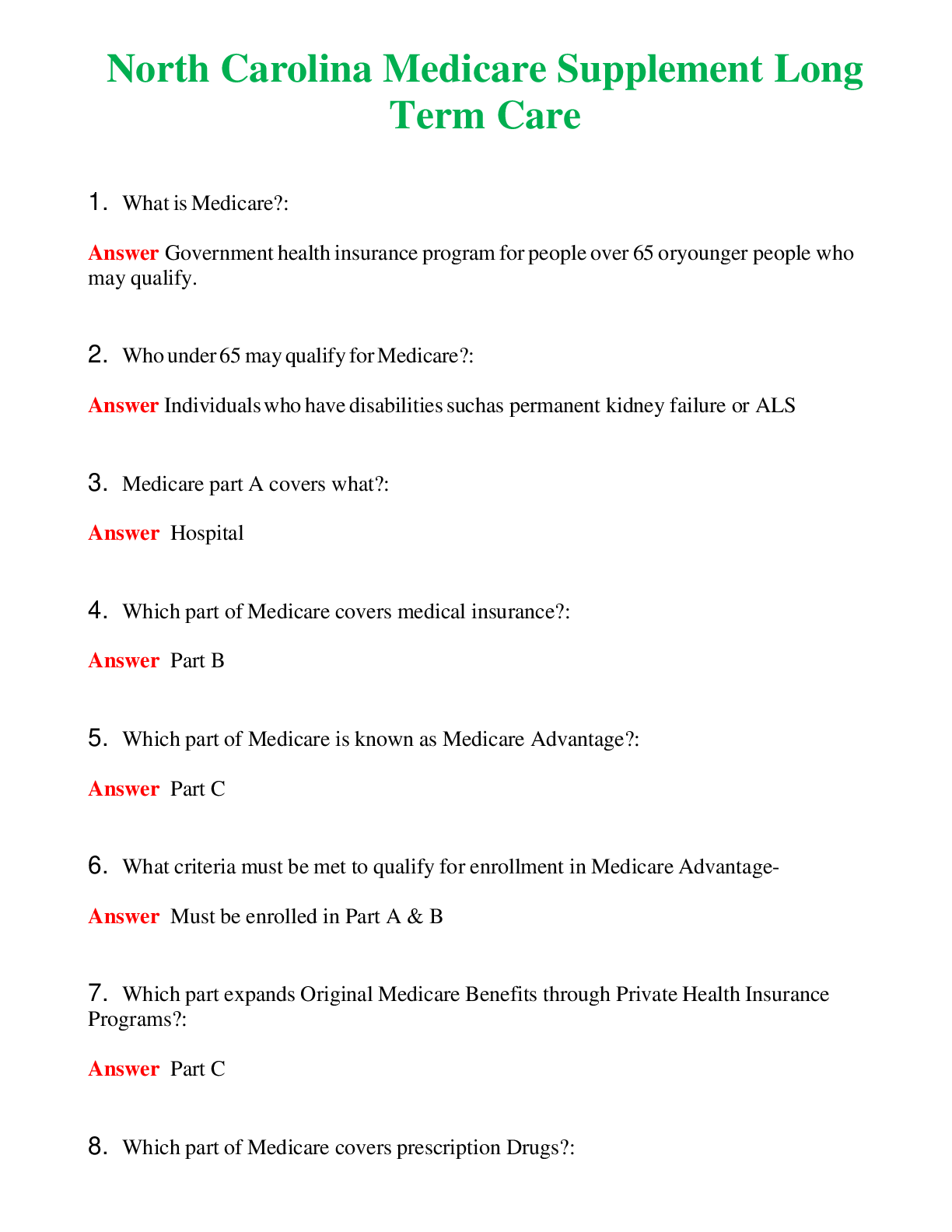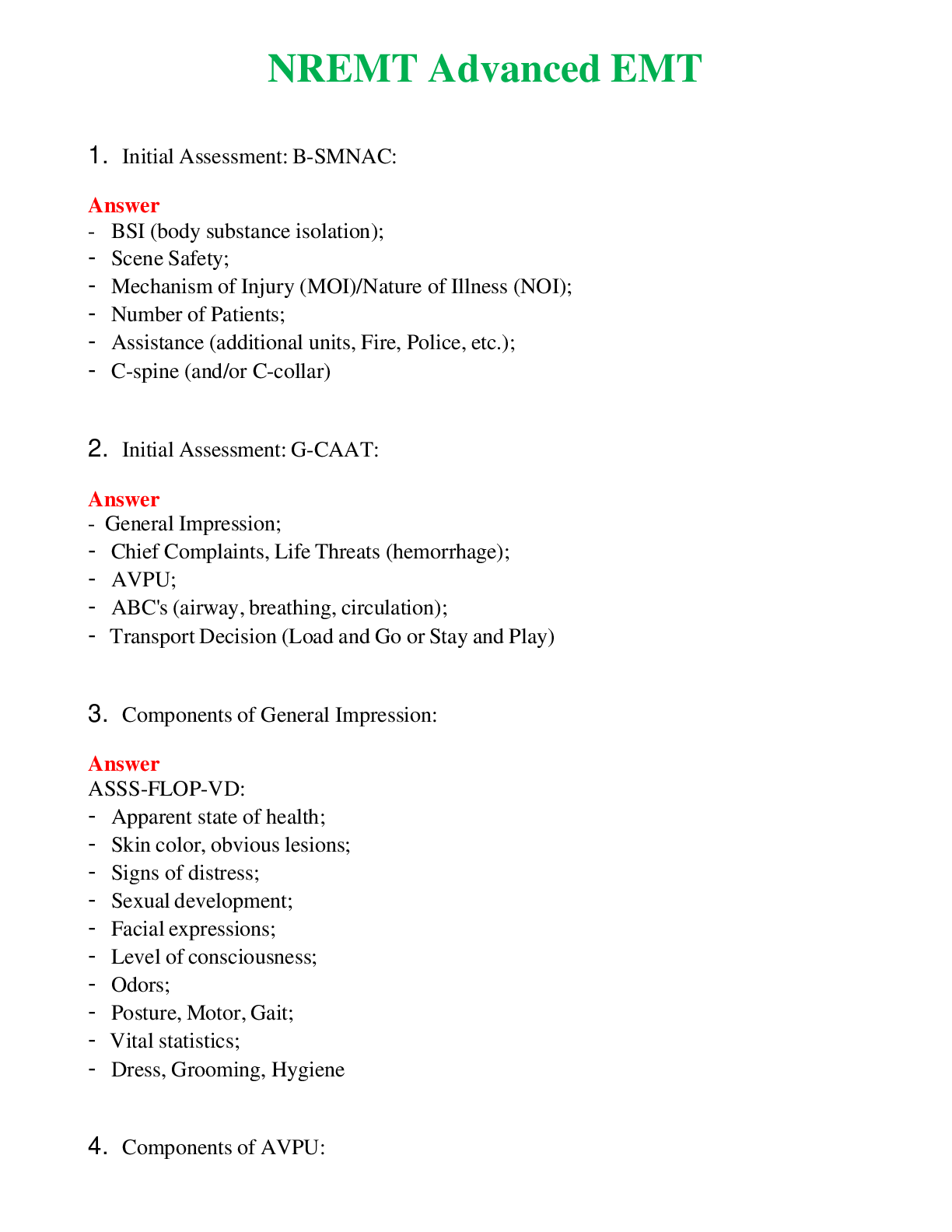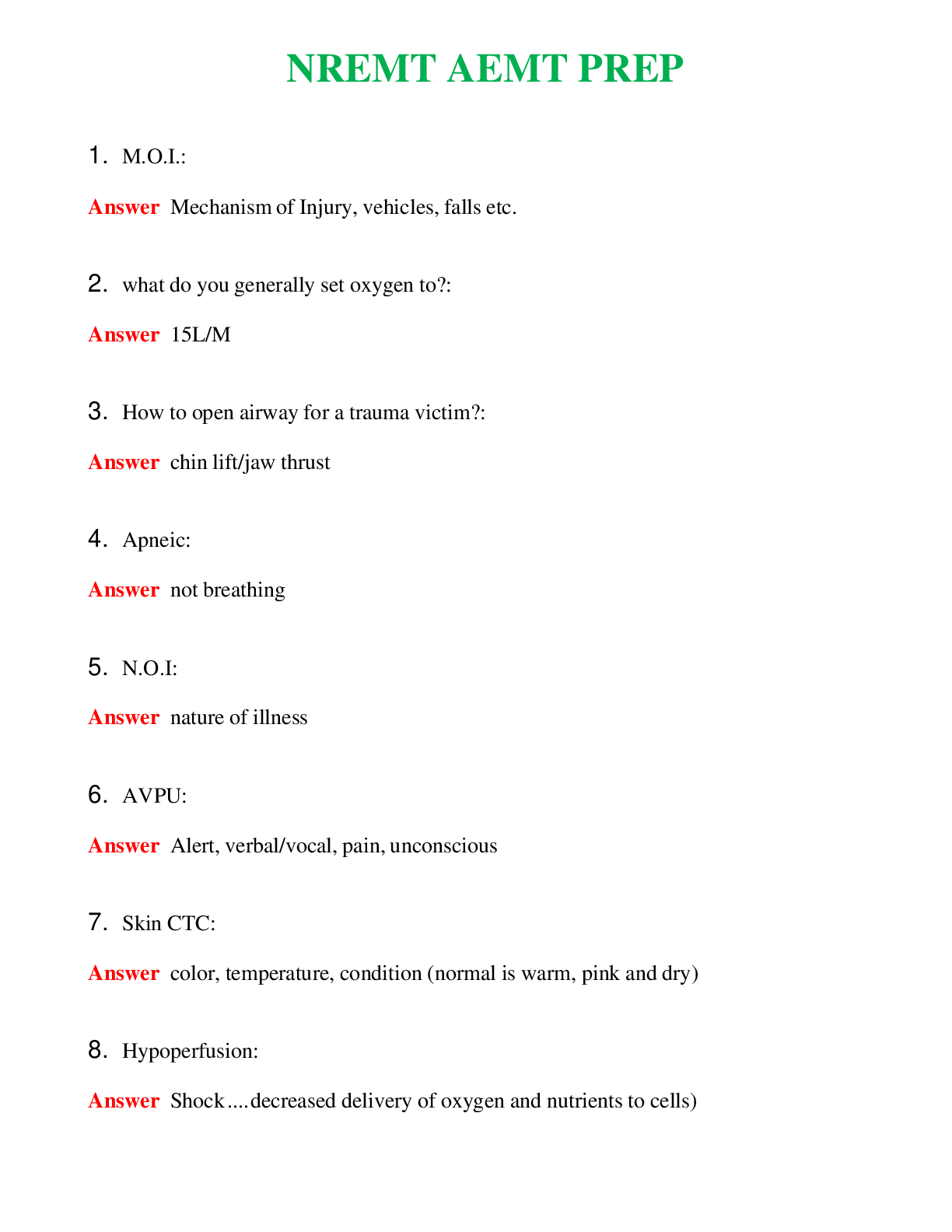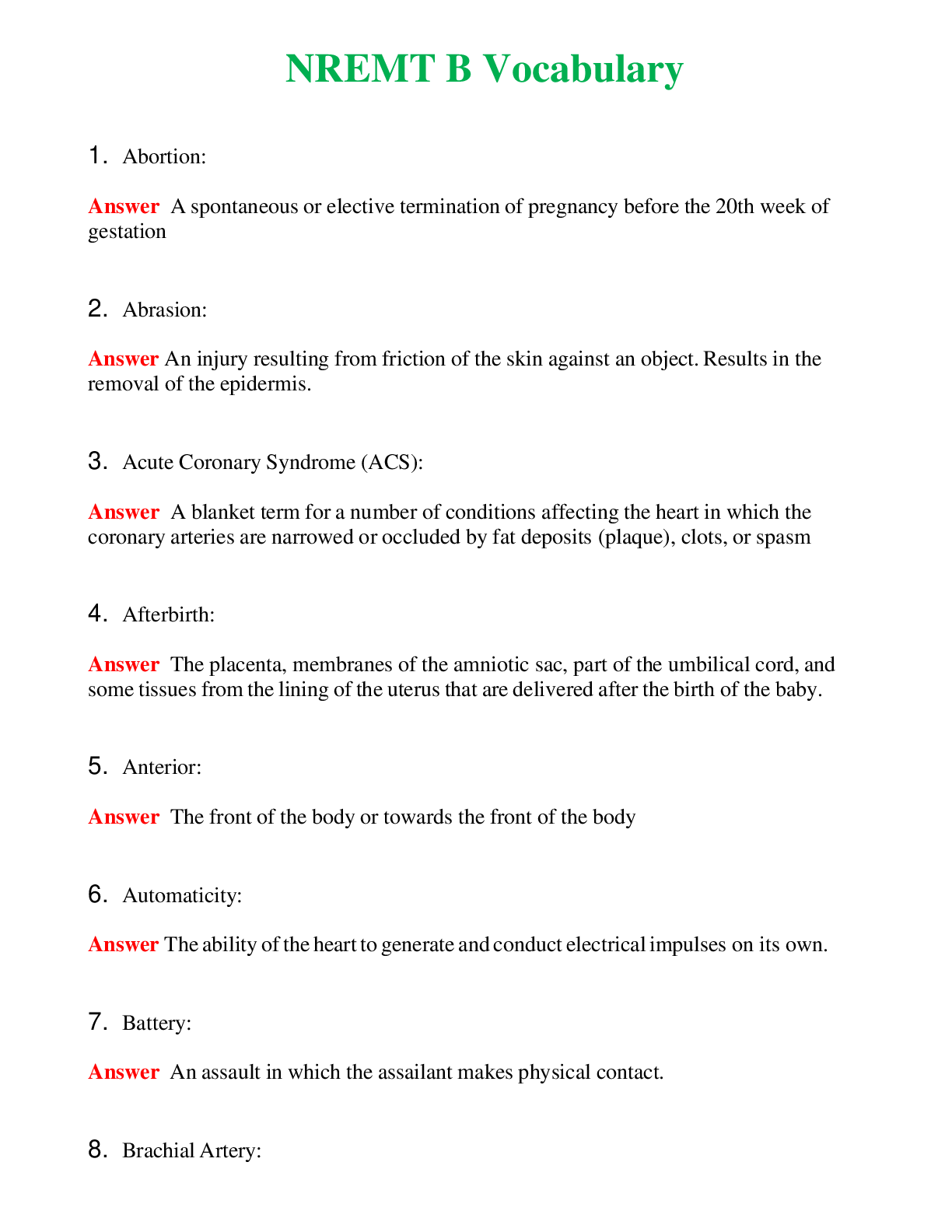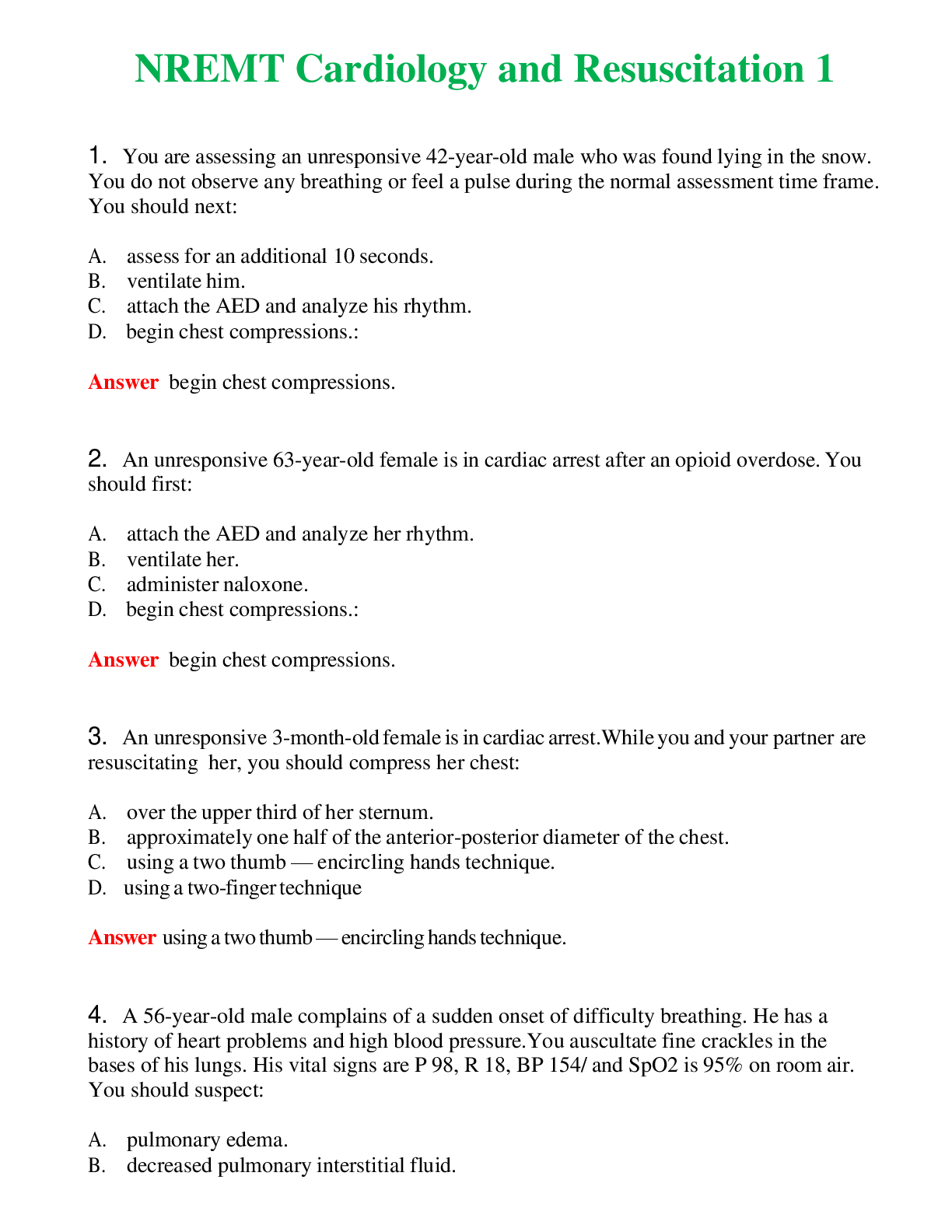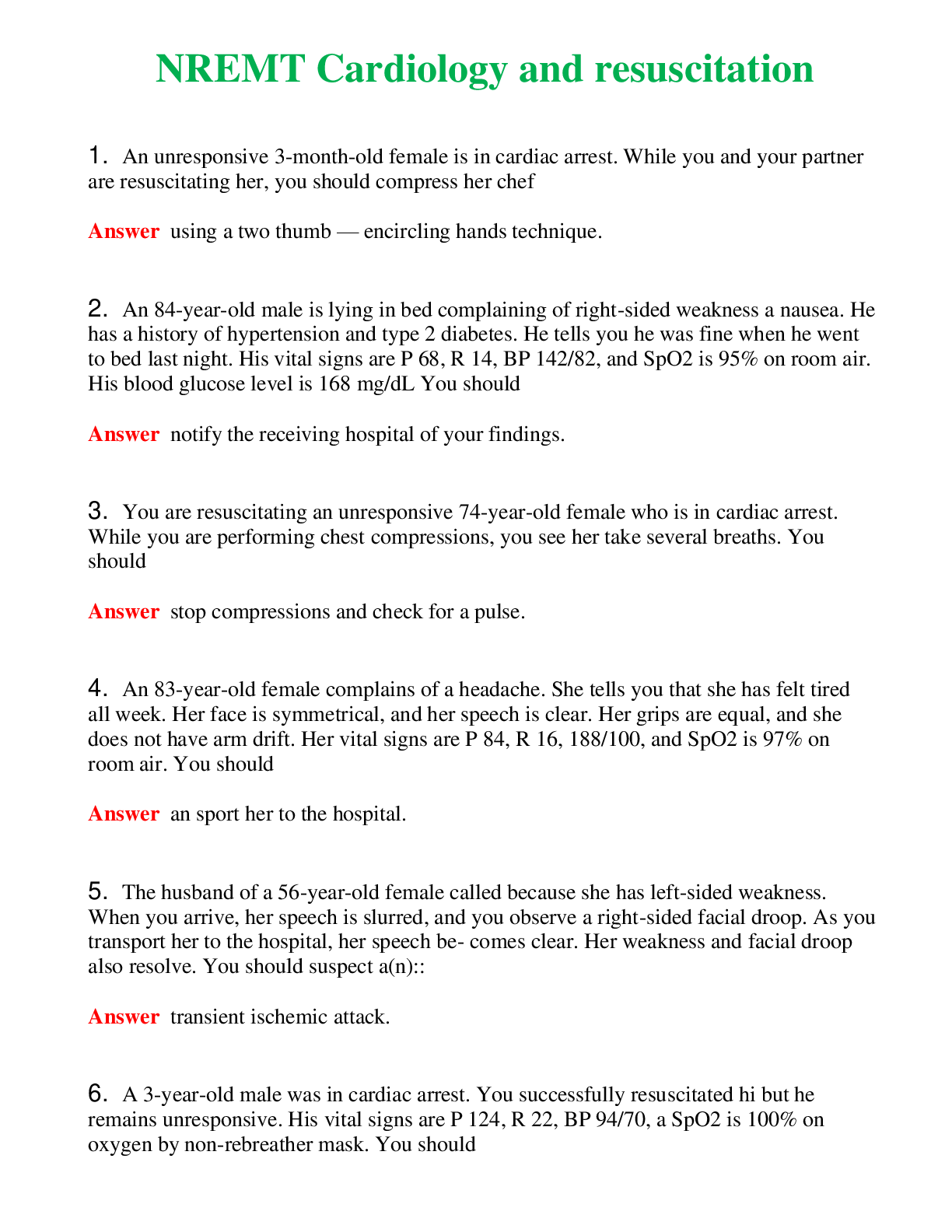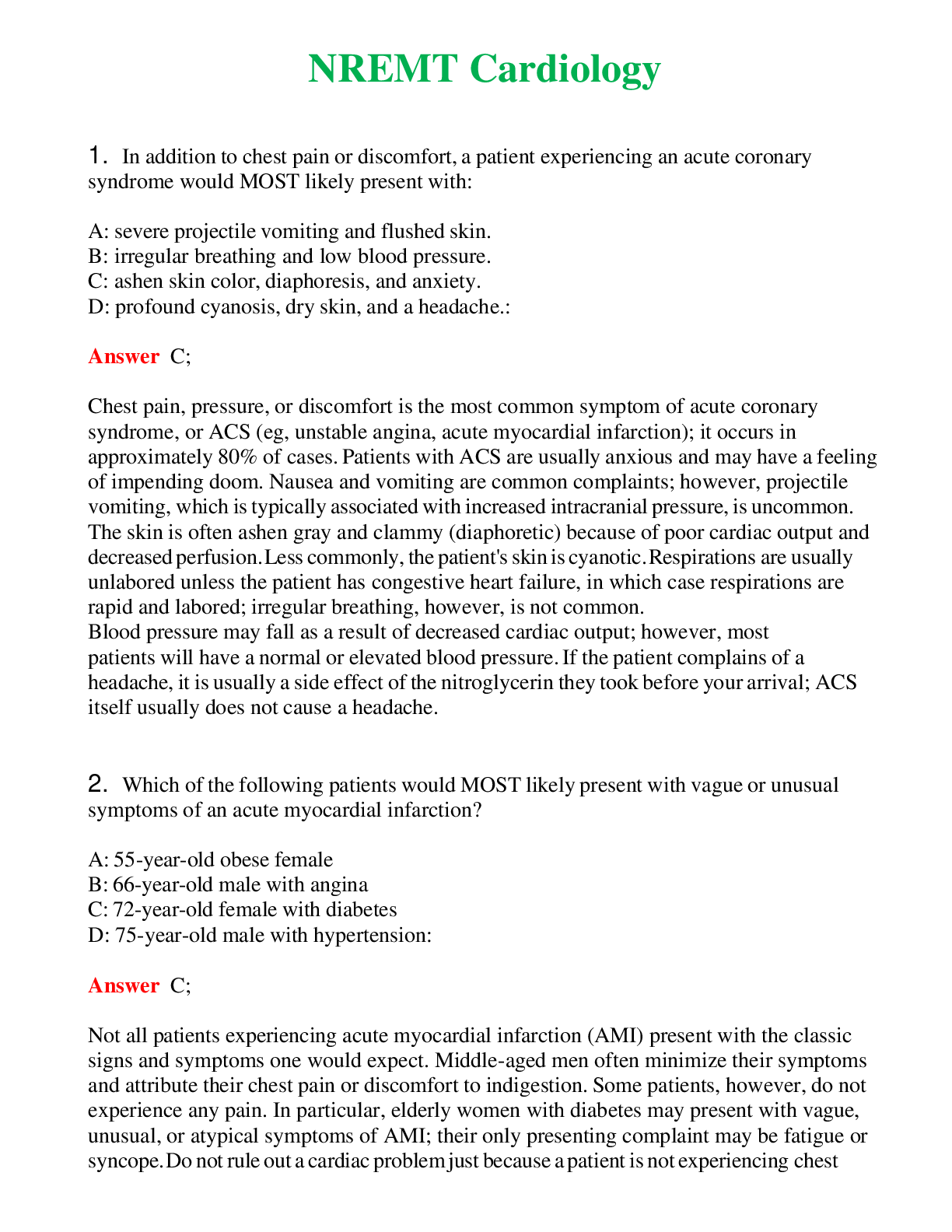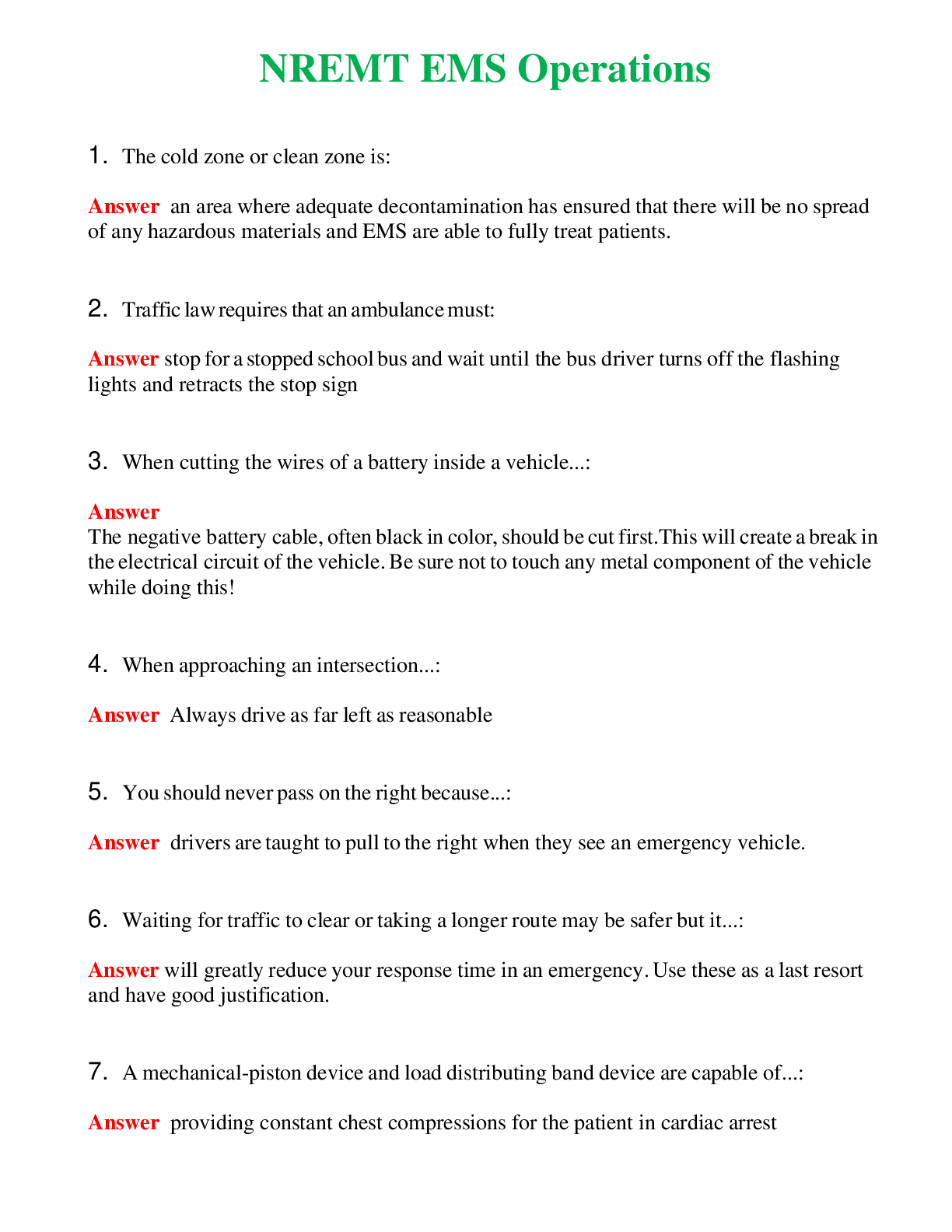Health Care > EXAMs > ATI: Nurse Logic 2.0:Nursing Concept (Solved and elaborated 2022-2023) (All)
ATI: Nurse Logic 2.0:Nursing Concept (Solved and elaborated 2022-2023)
Document Content and Description Below
A nurse working in a provider's office is reinforcing teaching with a client who is 14 weeks of gestation. The nurse should instruct the client to immediately notify the provider if she experiences wh ... ich of the following? A. Facial edema B. Urinary frequency C. Acid indigestion D. Breast leakage - A. Facial edema *The content of this question emphasizes the concept of client education by determining manifestations the client should be taught to immediately report to the provider. Client education is the provision of health-related education to clients to facilitate the acquisition of new knowledge and skills, adoption of new behaviors, and modification of attitudes. It is important for the client to be taught symptoms that should be immediately reported to the provider to prevent or reduce potential harm to herself or the fetus. Facial edema is an indication of pregnancy-induced hypertension and should be reported immediately to the provider. A nurse working in a hospice facility is talking to a client's son who is distressed because his mother cries frequently and says she wants to die. Which of the following responses by the nurse is appropriate? A. "I know this must be difficult, but your mother will calm down soon." B. "Let's discuss some strategies you can use when this happens again." C. "Individuals near death are ready to let go toward the end." D. "Have you determined why she is crying and saying she is ready to die?" - B. "Let's discuss some strategies you can use when this happens again." *The content of this question emphasizes the concept of client-centered care through the use of therapeutic communication. Client-centered care focuses on the client and emphasizes the client's cultural, ethnic, and social values. The use of therapeutic communication assists the nurse to develop client relationships that foster trust and respect. This response by the nurse offers to provide information, which can reduce anxiety and enhance decision-making. This response by the nurse creates a safe and secure environment, fosters trust and respect, and is appropriate. A nurse is caring for a client who has a urinary tract infection and is prescribed ciprofloxacin (Cipro). The client exhibits urticaria and angioedema following administration of the medication. Which of the following is the first action the nurse should take? A. Administer epinephrine (Adrenaline). B. Elevate the lower extremities. C. Determine respiratory status. D. Apply oxygen via non-rebreather mask. - C. Determine respiratory status. *The content of this question emphasizes the concept of priority setting by determining priority nursing action for a client experiencing an allergic reaction. Priority setting is the use of nursing judgment when making decisions about the rank order in which to take nursing actions. Various priority setting frameworks, such as Maslow's Hierarchy of Needs, nursing process, ABC, and safety and risk reduction, can be useful in determining the priority of needed actions. This item can be answered using both nursing process and the ABC priority setting framework. The client is experiencing angioedema, indicating the possibility of an anaphylactic reaction, which is life-threatening; therefore, the nurse should first determine the client's respiratory status. A nurse is caring for a child who is 24 hr postoperative following a supratentorial craniotomy. The nurse should maintain the child in which of the following positions? A. Prone with head of the bed flat B. Dorsal recumbent with head of the bed elevated to 15° C. Supine with head of the bed elevated to 30° D. Side-lying with head of the bed elevated to 45°. - C. Supine with head of the bed elevated to 30° *The content of this question emphasizes the concept of safety through selection of the appropriate position for a child who is postoperative following a supratentorial craniotomy. Safety in nursing practice is the minimization of risk factors that could cause injury or harm while promoting quality care and maintaining a secure environment for clients, self, and others. Through the provision of client-centered care and incorporation of evidence-based practice, nurses are able to assist in achieving this goal by preventing or minimizing physical injury. Following a supratentorial craniotomy, the client should be maintained in a position that facilitates drainage of cerebrospinal fluid and prevents hemorrhage by reducing blood flow to the brain. Positioning the client supine with the head of the bed elevated to 30° is appropriate. A nurse has assigned four tasks to an assistive personnel (AP). Which of the following should the nurse instruct the AP to perform first? [Show More]
Last updated: 3 years ago
Preview 1 out of 10 pages

Buy this document to get the full access instantly
Instant Download Access after purchase
Buy NowInstant download
We Accept:

Reviews( 0 )
$12.00
Can't find what you want? Try our AI powered Search
Document information
Connected school, study & course
About the document
Uploaded On
Nov 14, 2022
Number of pages
10
Written in
All
Additional information
This document has been written for:
Uploaded
Nov 14, 2022
Downloads
0
Views
121


